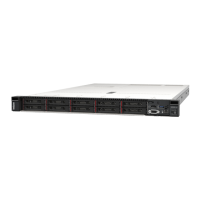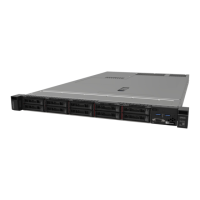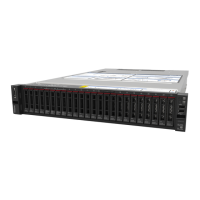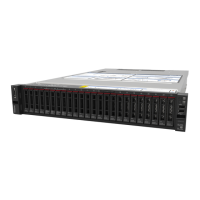Step 6. Check for operating-system-specific causes of the problem, and also make sure that the operating
system drivers are installed correctly.
Step 7. Make sure that the device drivers on the client and server are using the same protocol.
If the Ethernet controller still cannot connect to the network but the hardware appears to be working, the
network administrator must investigate other possible causes of the error.
Troubleshooting by symptom
Use this information to find solutions to problems that have identifiable symptoms.
To use the symptom-based troubleshooting information in this section, complete the following steps:
1. Check the event log of the application that is managing the server and follow the suggested actions to
resolve any event codes.
• If you are managing the server from the Lenovo XClarity Administrator, begin with the Lenovo XClarity
Administrator event log.
• If you are using some other management application, begin with the Lenovo XClarity Controller event
log.
For more information about event logs (see
“Event logs” on page 299).
2. Review this section to find the symptoms that you are experiencing and follow the suggested actions to
resolve the issue.
3. If the problem persists, contact support (see
“Contacting Support” on page 343).
Liquid cooling module problems (NeptAir module)
Use this information to resolve problems with the Processor Neptune
TM
Air Module (NeptAir).
•
“Liquid leak problem” on page 315
• “Cable break problem” on page 316
Liquid leak problem
Liquid leaks can be identified through the following practices:
• If the server is on remote maintenance,
– A Lenovo XClarity Controller event shows:
FQXSPCA0041N: Liquid is leaking from closed loop [CoolingSensorName].
Chapter 7. Problem determination 315

